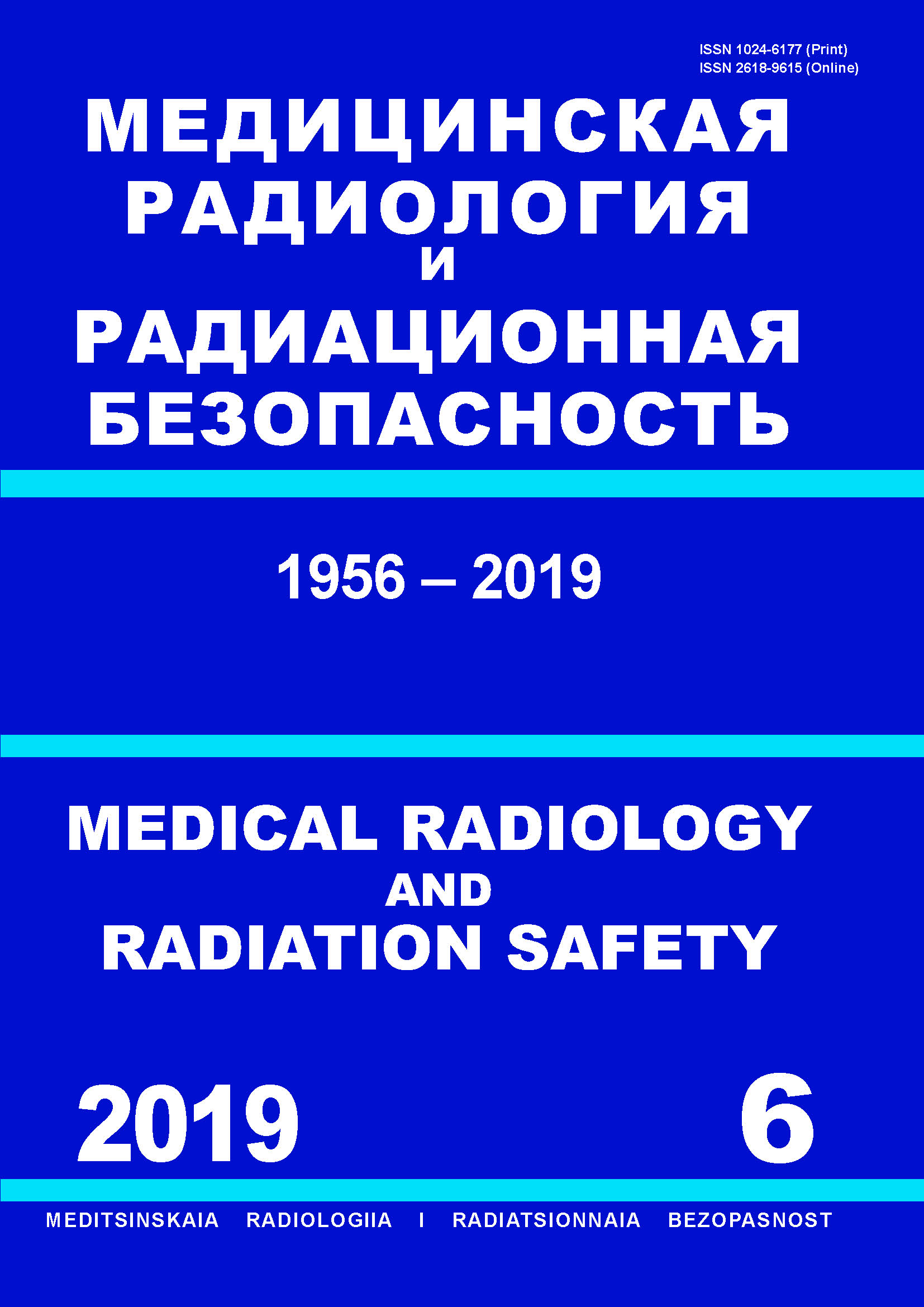National Research Nuclear University MEPhI (Professor)
CSCSTI 76.03
CSCSTI 76.33
Russian Classification of Professions by Education 14.04.02
Russian Classification of Professions by Education 31.06.2001
Russian Classification of Professions by Education 31.08.08
Russian Classification of Professions by Education 32.08.12
Russian Library and Bibliographic Classification 51
Russian Library and Bibliographic Classification 534
Russian Trade and Bibliographic Classification 5708
Russian Trade and Bibliographic Classification 5712
Russian Trade and Bibliographic Classification 5734
Russian Trade and Bibliographic Classification 6212
Purpose: Clinically available quantitative method for assessing the dynamics of the size and physical density (in g/cm3) of the tumor in adaptive radiotherapy for cancer patients and any cases of visualization of tumor boundaries including the cases when the border of a tumor is not clearly visualized. Material and methods: A preliminary analysis of the images transmitted over the CT network was carried out in the Eclipse planning system (PS). The radiotherapy treatment planning using electron accelerators with a multi-leaf collimator( Varian (USA)) was carried out at the Eclipse PS. The image quality control of Light Speed RT 16 (manufactured by GE) X-ray computed tomography scanner was performed using the multi-modular phantom Catphan® 504. The assessment of the densitometric characteristics CT imaging made using eight tissue-equivalent a test object with mass densities from 0.03 to 1.37 g/cm3 which corresponding to the density of biological tissues of the human body. To quantify the size and density of the tumor in a dynamic mode, we have written and used our own Matlab program installed on a separate computer. For lossless compression of graphic information, the PNG-image scale (raster graphic information storage format) is used, which is equivalent to the scale of the original DICOM file at the Eclipse PS. A program consists of subroutines that include calibration, contour integration, and integration along a horizontal line. Results: The quantitative information content of the method is shown. The method is used in clinical practice. Conclusions: A clinically available quantitative method for assessing dynamics of the size and physical density of the tumor has been developed and proposed for use in adaptive radiatiotherapy for cancer patients for any cases of visualization of tumor boundaries. When a positive dynamics in the tumor, the integral index is greater than 1 (M > 1), when a negative dynamics (in the absence of response to treatment) M ≤ 1. Quantitative characteristics are objective, do not depend on the subjective assessments of personnel and can serve as a basis for rescheduling exposure plans.
adaptive radiotherapy, CT images, assessing the tumor size and density, programmatic method
1. Stavitsky RV. Aspects of Clinical Dosimetry. Moscow. MNPI; 2000. 388 p. (In Russian).
2. Lebedenko IM. Quantitative Criteria for Assessing of Changes in Tumor and Normal Tissues During Radiotherapy. Moscow. Diss. PhD Biol; 2005 (In Russian).
3. Quality Control in Radiotherapy And Radiation Diagnosis. Collection of Normative Documents. Minsk. Poliprint; 2009. 272 p. (In Russian).
4. IEC: Evaluation and routine testing in medical imaging departments 61223-3-5 Part 3-5: Acceptance tests - Imaging performance of computed tomography X-ray equipment. Geneva. Switzerland; 2004.





